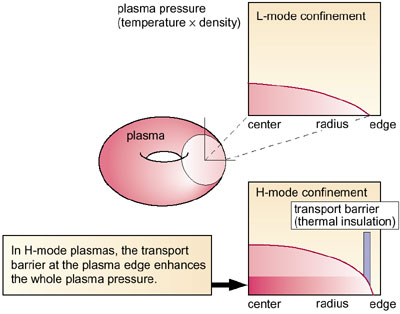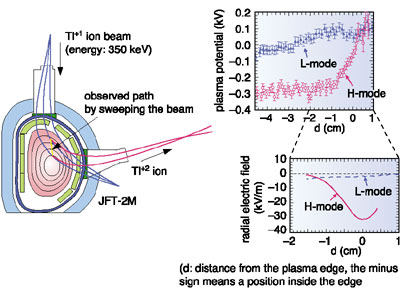In high-confinement H-mode plasmas, confinement properties are improved by the formation of a transport barrier, which suppresses the transport of heat and particles at the plasma edge and then increases the whole plasma pressure (Fig. 3-7).
In order to explore H-mode physics (the formation of transport barriers), a detailed investigation has been performed on JFT-2M by introducing a Heavy-Ion Beam Probe apparatus in cooperation with the National Institute for Fusion Science. The right figures of Fig. 3-8 show spatial distributions of plasma potential and radial electric field obtained by sweeping the heavy-ion (Tl-ion) beam from inner plasmas to edge plasmas, as shown in the left figure of Fig. 3-8. H-mode plasmas featured an abrupt change of radial electric field (Er) from zero to -30 kV/m near the plasma edge.
It was found in the present measurements that a large gradient of radial electric field in H-mode plasmas forms the transport barrier at the plasma edge to suppress the conduction of heat and particles. We have successfully progressed H-mode studies in the JAERI tokamaks JFT-2M and JT-60. |


